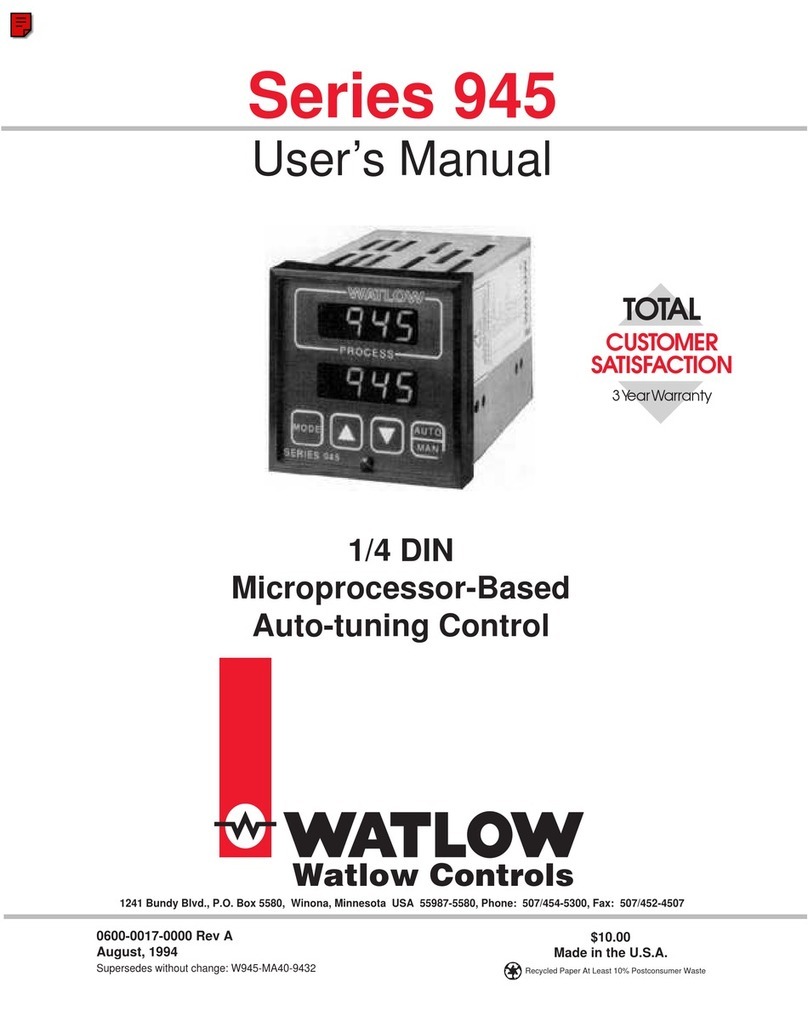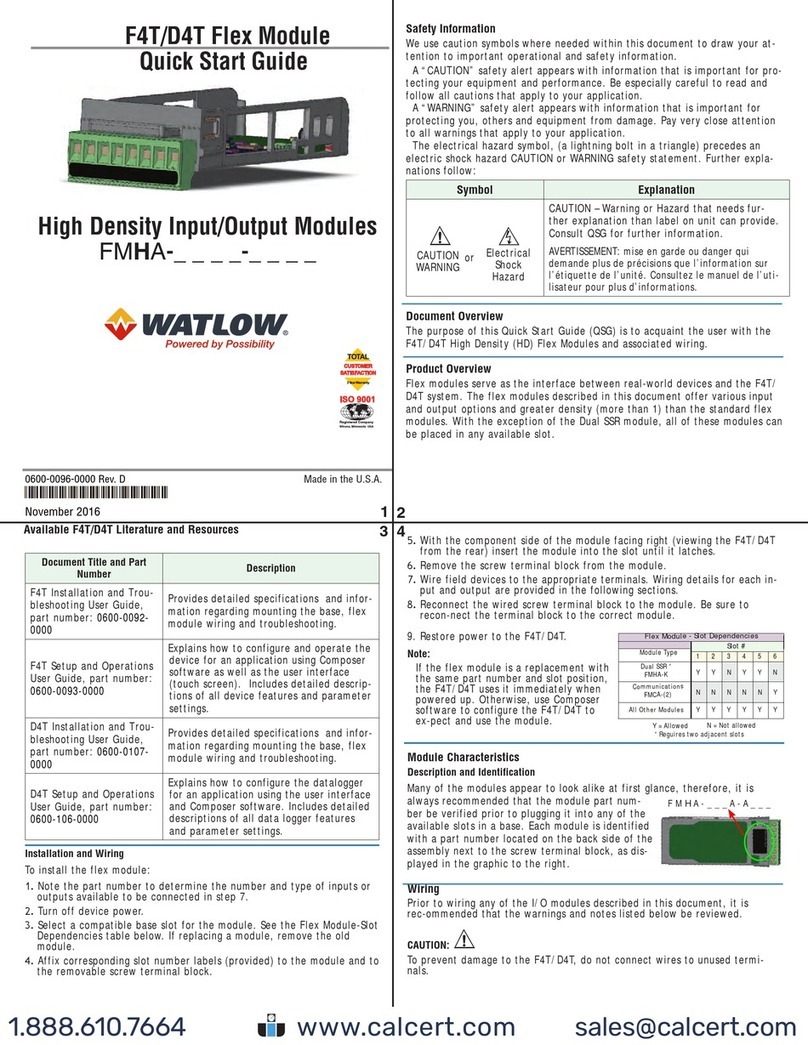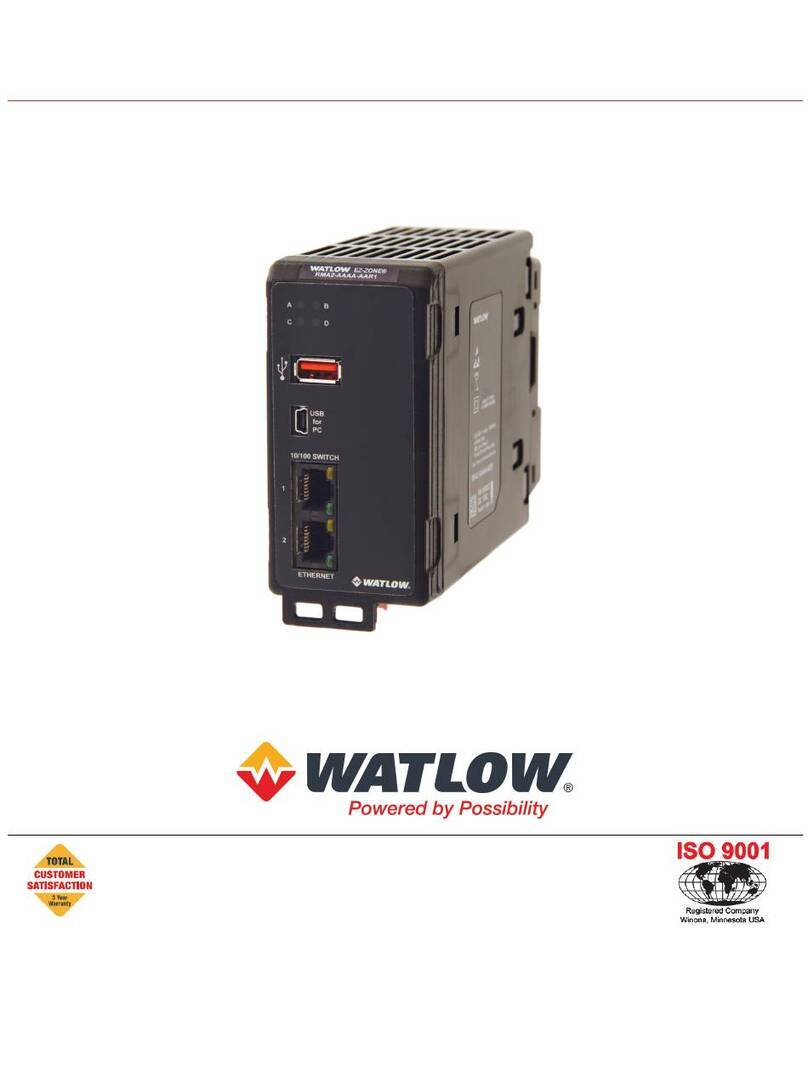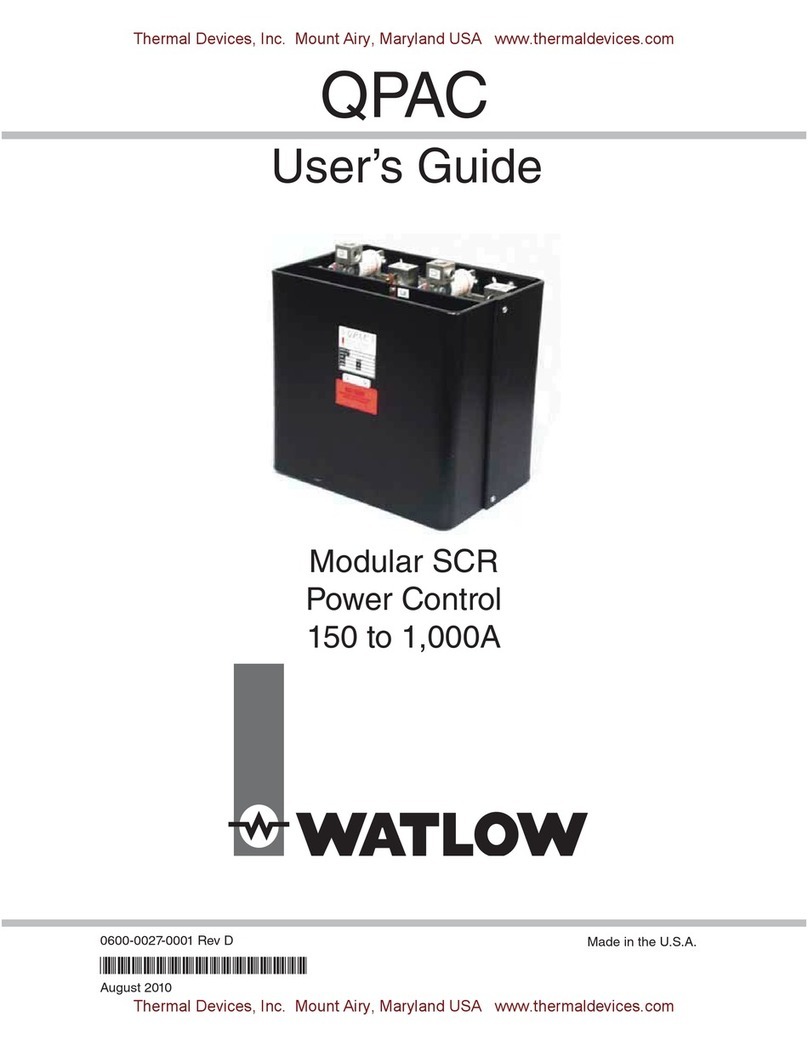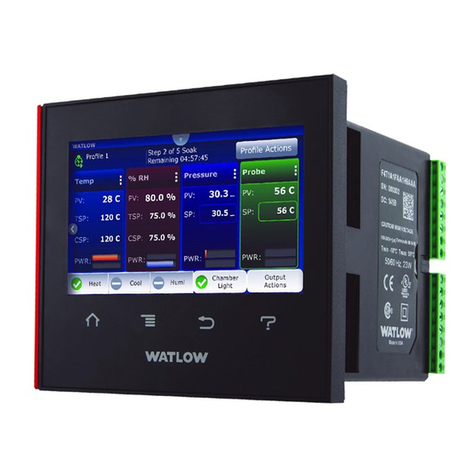
Starting Out
5
QPAC User's ManualGetting Started, Chapter 1
Starting Out
Card. See Figure 2. Power Bases are avaliable in 30 to 300A ratings with
UL508 and C-UL listing and 400-1,000 amps non-agency approved in single
phase, three phase-two leg and three phase-three wire configurations. A
Transformer plugged into the Power Base allows the QPAC to operate on any
voltage from 120 to 480Vac fan. 575Vac consult factory. The plug-in Control
Card sets the QPAC’s firing mode. Control Cards are available in solid state
contactor, burst firing (zero cross), or phase angle firing with a wide variety of
options. This modular approach, using a standard Power Base with plug-in
Transformers and Control Cards, allows power control users, distributors and
OEMs to maintain minimum inventories while still providing rapid service.
The different QPACs provide the types of power control needed for different
power sources and loads. The QPAC-01 is designed for all single phase
power sources and loads. The QPAC-32 is for three phase zero cross applica-
tions such as resistance heating elements, balanced or unbalanced. The
QPAC-33 is best suited for balanced three phase, phase angle applications
requiring soft start or current limiting, or with inductive loads.
Steps To Put Your Power Control To Work
To put your QPAC to work, we suggest the following steps:
•Read the User's Manual.
•Plan your installation and wiring.
•Mount the QPAC.
•Wire your QPAC to the system.
•Start the system and, if applicable, adjust the bias and gain on the QPAC.
•That's all there is to it!
Figure 2 -
QPAC Modularity
Overview
QBF 08-5289
U1
U2
TB1
Control Cards
•Solid state contactor, AC input, CA
•Solid state contactor, DC input, CD
•Burst firing (zero cross) fixed time base, BF
•Burst firing (zero cross) variable time base, BV
•Phase angle control, AF *
•Phase angle control with current limiting, AL *
*Note: For 1Ø and 3Ø, 3 wire controls
only; not for 3Ø, 2 leg controls.
Power Bases With Motherboards
• QPAC-01: 1Ø, 30 - 300A
•QPAC-32: 3Ø, 2 leg, 30 - 300A
•QPAC-33: 3Ø, 3 wire, 30 - 300A
Plug-in transformers (50/60 Hz.)
•120Vac
•208/240Vac
•380Vac
•415Vac
•480Vac
•575Vac, consult factory












